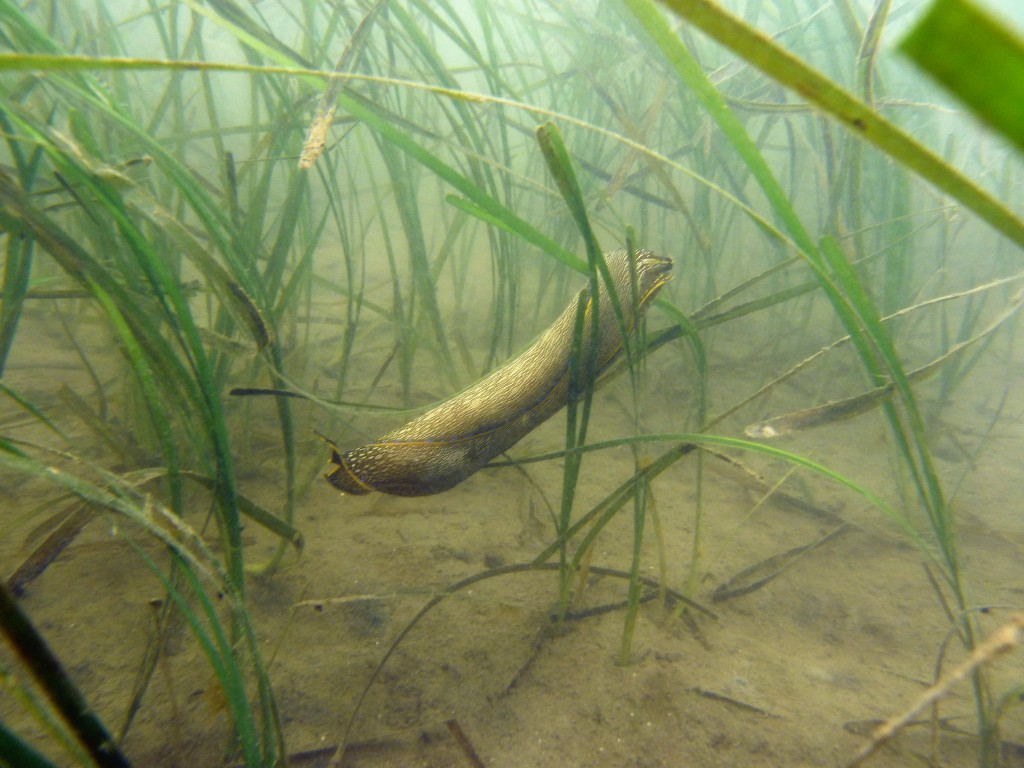
The eelgrass that Orange County Coastkeeper transplanted into the bay last summer is healthy and doing well, the environmental group announced this week.
Divers from the organization and Coastal Resources Management, Inc., surveyed the restored eelgrass habitat on Dec. 7 for the first time since it was transplanted into the bay in June of last year. They went back to check on the eelgrass again on Jan. 22, following several heavy rainstorms.
“We didn’t really know where we were going to be,” at this point in the project, said Newport Back Bay Eelgrass Restoration Project coordinator, Amanda Bird. “It looks better than we thought it was going to.”
Overall, the eelgrass is growing and expanding quickly, added Bird, who went on the dive with CRM president and senior marine biologist, Rick Ware, along with Coastkeeper captain, Austin Brown.
The new eelgrass beds are denser than they had predicted for the six-month surveys, Bird said. They weren’t expecting this kind of growth until about one year out.
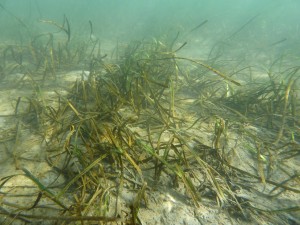
The eelgrass looked very different during their second survey in January after several heavy rains, she added.
“During the winter months, especially when it rains, the grass dies back a bit to conserve resources,” she said. “Sediment from the watershed carries a lot of suspended materials that are deposited on the eelgrass blades causing them to bend and be buried. Increased water turbidity also decreases light available to these photosynthetic organisms, causing them to shed their leaves and conserve their energy beneath the sediment in their rhizomes.”
They will know more when the group heads back out in spring to survey the area again and start round two of restoration.
Divers also observed many different species including juvenile barred sand bass, California halibut, various sea slugs and round stingrays.
“There were also new invertebrates growing on the eelgrass,” Bird said. “A lot of species you wouldn’t normally see unless the eelgrass was there.”
She also saw a lot of birds diving for food and foraging in the eelgrass.
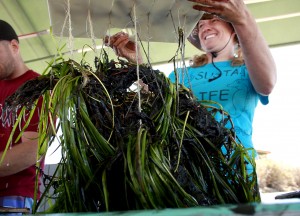
The Newport Back Bay Eelgrass Restoration Project is a four-year phased plan aimed at restoring the ecosystem in the bay and working with the community to make eelgrass known as a beneficial species rather than a problem weed, as many would currently call it, Bird explained when the project kicked off last year.
The project, which also includes public outreach and student programs, will examine many aspects of the Newport Beach native seagrass.
Eelgrass supports a diverse ecosystem, works as a habitat for fish and foraging grounds for birds, acts like a nursery for juvenile fish species, slows coastal erosion, stores excess carbon, and is an “indicator” species for the overall health of the bay, Bird said in June.
The Coastkeeper team started transplanting the eelgrass from around Harbor Island to a 50 square meter area near the Back Bay Science Center in June of 2012.
They used three different methods to plant the eelgrass: Bundling, TERF frames and seeded bags.
In the bundling area, they found very healthy and natural looking beds where the small “hair-plug-like” transplants had been placed, Bird said.
“They had filled in the entire area,” she said.
The eelgrass has also expanded to new areas on a mudflat that previously had no vegetation.
In another area, all of the TERFs (Transporting Eelgrass Remotely with Frames), in which the seagrass is tied to wire frames, were still in place and had new patches of eelgrass growing in and around the frames.
The eelgrass in this area not only survived, but reproduced, Bird said.
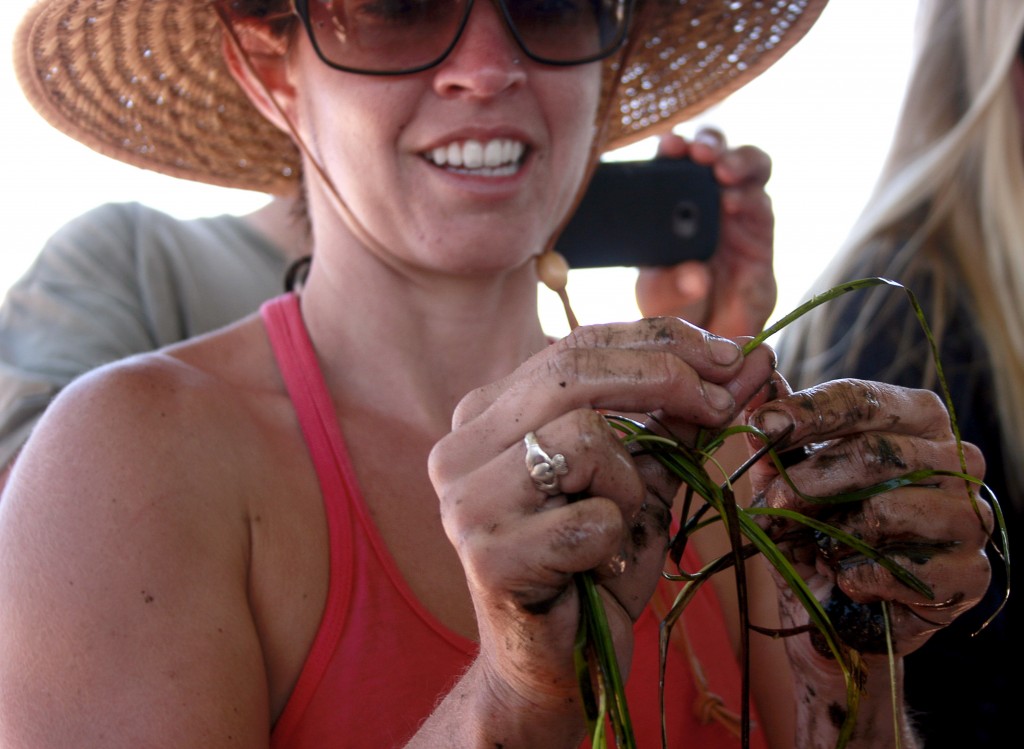
The TERF frames in the bay are displaying a 63 percent survival rate, which is quite a bit better than the 50 percent average, she added.
Small patches of seedlings were also found within the area of the Buoy-Deployed Seed (BuDS) bags, in which bags of eelgrass seeds are tied to buoys.
Coastkeeper had placed 20 seed bags, but only seven were left, Bird said. The rest were likely cut off by boat propellers, she explained. From those seven seed bags left, there were small patches under all of them.
It’s difficult to determine how successful the seed bags have been at this point, Bird said, but Coastkeeper is hopeful they will continue to grow and expand. They’ll have a better idea when they return in the spring.
Also in the spring, the team will conduct GPS mapping and taking samples, hoping to determine the total area the eelgrass has expanded to in each particular area and the density of the grass from each area. This information will help them determine which method has been most effective and which of the three they will use again.
This spring Coastkeeper also plans on transplanting about twice as much eelgrass as they did last summer, Bird said. They are again looking for volunteers to help.
“I’m feeling very positive,” about the project, Bird said. “We’re hoping that this (project) might help change perspectives on eelgrass on a larger scale… I hope people (in the community) will be able to see what the grass is doing, why it’s important and why we need it in the bay.”
The restoration project is coordinated by Orange County Coastkeeper in partnership with Coastal Resources Management, Inc., and the Department of Fish and Game staff at the Back Bay Science Center.
This is the first phase of the project, and is funded by the Community-Based Restoration Program at the National Oceanic and Atmospheric Administration and the State Coastal Conservancy.
For more information, visit coastkeeper.org.
See the Indy story about the kickoff of the project here.
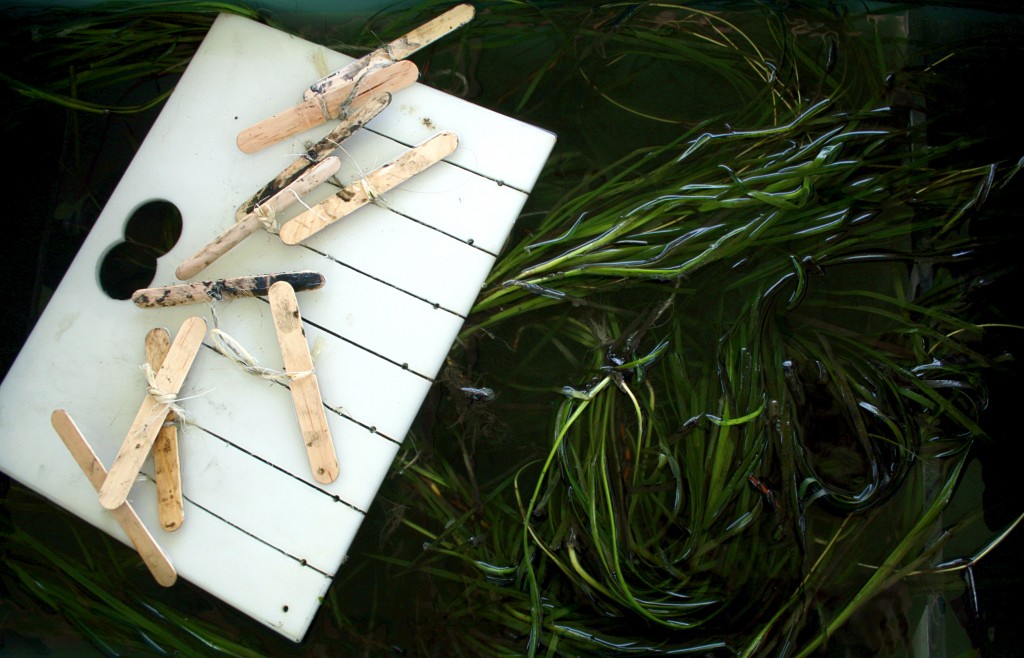



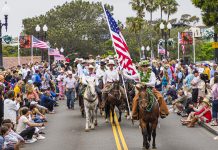

Is this the prelude for the Tideland permit increases? I think OCCK has done allot in Newport Bay and with little recognition. I hate to see them be puppets for Tideland permit increases justifying “here’s where your money goes”, and the work is minimal for what really needs to get done, and right the first time. “Toxic nurseries in a flood control system” really?, just sounds off course here and swimming in hypocrisy. Lets make the bay water healthy first, and these type of projects will be well worthy of funds spent. There are areas in the West end of the bay that are very low in oxygen, nothing can grow where once was teaming with life. These areas are perfect for the eel grass project, and many of us are relieved the keepers are also using the seed method. Newport Beach can build its $130 million dollar civic center thats touted as a great expenditure for the future, to bad we don’t have the same soul and local funding to get our bay thriving and something to finally be proud of. Maybe the graces of Don Bren and his Irvine Company will find it the right thing to do and fix our biggest bay issues (San DIego Creek runoff, and I have a good plan), now that would be a cool legacy.
Good luck!